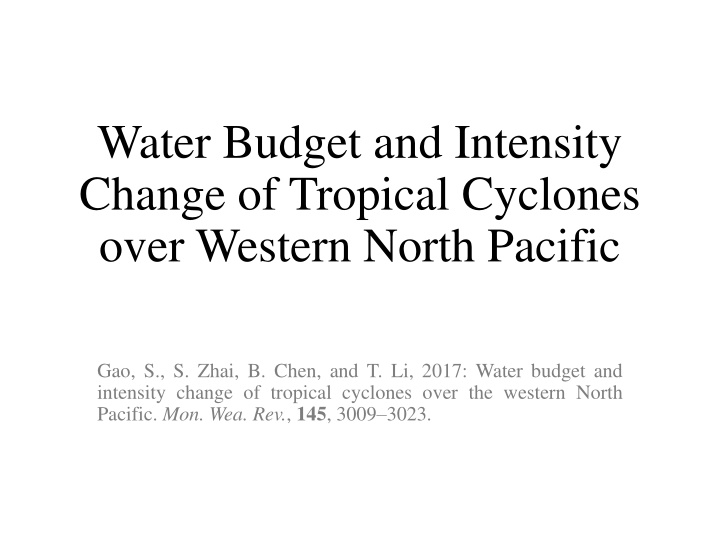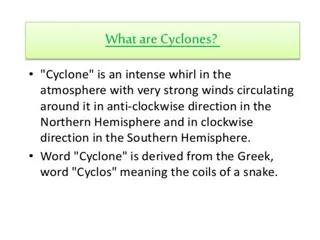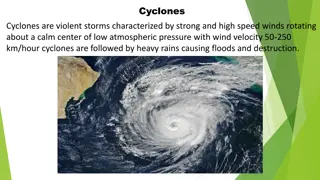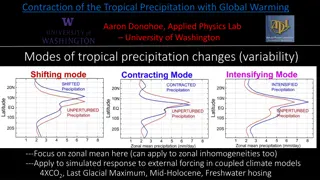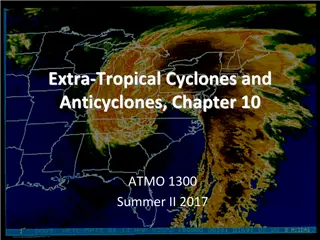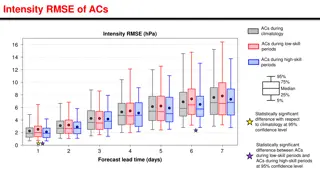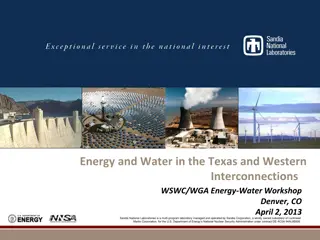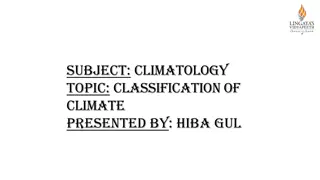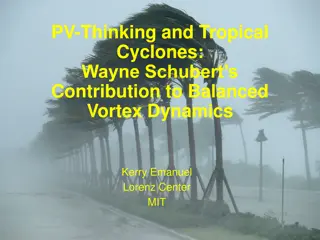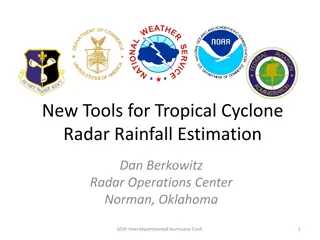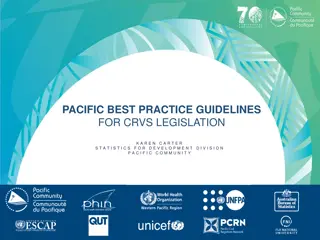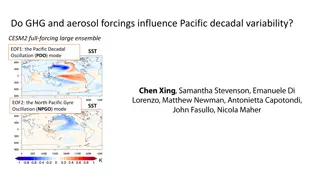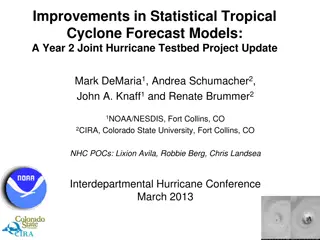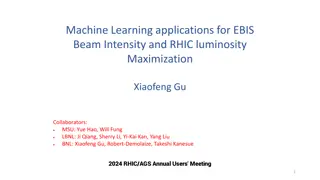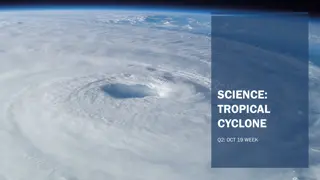Water Budget and Intensity Change of Tropical Cyclones in Western North Pacific
Study on the water budget and intensity changes of tropical cyclones over the western North Pacific, conducted by Gao, S., Zhai, S., Chen, B., and Li, T. in 2017.
Download Presentation

Please find below an Image/Link to download the presentation.
The content on the website is provided AS IS for your information and personal use only. It may not be sold, licensed, or shared on other websites without obtaining consent from the author.If you encounter any issues during the download, it is possible that the publisher has removed the file from their server.
You are allowed to download the files provided on this website for personal or commercial use, subject to the condition that they are used lawfully. All files are the property of their respective owners.
The content on the website is provided AS IS for your information and personal use only. It may not be sold, licensed, or shared on other websites without obtaining consent from the author.
E N D
Presentation Transcript
Water Budget and Intensity Change of Tropical Cyclones over Western North Pacific Gao, S., S. Zhai, B. Chen, and T. Li, 2017: Water budget and intensity change of tropical cyclones over the western North Pacific. Mon. Wea. Rev., 145, 3009 3023.
introduction TC intensity prediction still lags track prediction (DeMaria et al. 2014). Difficulties in rapid intensification prediction: 1. large-scale environmental controls: vertical wind shear, relative humidity (RH), upper-level trough interactions, and synoptic flow patterns 2. air sea interactions: transfer of high air sea heat fluxes 3. inner-core dynamics and thermodynamics latent heat release, convective bursts, hot towers, and mid- to upper-level warm core
Atlantic TCs intensity change dry Saharan air layer (SAL) air could be either favorable or unfavorable for intensification of Atlantic TCs, depending on its location relative to TC center. [Shu and Wu (2009)] RI Atlantic TCs were associated with a sharp decrease of 400 300-hPa RH from 200 to 800km beyond the TC center at the right-front quadrant of TC motion. [Wu et al. (2012)] RI storms have more symmetric patterns of rainfall and latent heat flux, higher latent heat flux, but less moisture transport than non-RI storms.
Water budget Total moisture tendency: Vertical advection Apparent moisture sink horizontal advection Vertical moisture advection can be decomposed to Horizontal and vertical moisture flux convergence (MFC)
Integrating (3) from PS (the pressure at the sea surface) to PT (the pressure at upper bound) (V is nen 1961; Palm n and Holopainen 1962) C: column-integrated MFC E: surface evaporation P: precipitation TPW: Total Precipitable Water Bulk aerodynamic formula (Fairall et al. 2003): ?? : air density CE : turbulent exchange coefficient for moisture U : 10-m wind speed qsat(SST) : saturation specific humidity at the SST qa :10-m specific humidity.
Data Time period: 2001-09, 217 WNP TCs Data sets Special resolutions Temporal resolutions 6-hourly 3-hourly daily TC best track Precipitation Total precipitation water (TWP) Surface evaporation SST Wind, specific humidity, surface pressure JTWC TRMM 3B42V7 TRMM Microwave Imager (TMI) IFREMER3 NOAA NCEP FNL 0.25 0.25 0.25 0.25 1.0 daily daily 6-hourly
:???????? ????????? RMW is negatively correlated with intensity change except for the W category with the least RMW.
mean vertical wind shear (VWS) annular region of 200 800km from the storm center after applying a vortex removal technique.
Total precipitable water composite shear-relative distribution N Shear vector normalized by RMW
composite shear-relative distribution Surface evaporation SST N Shear vector
Moist flux convergence precipitation N Shear vector
CAPE Vertical profile Averaged within 300 km of the storm center
Summary Surface evaporation (associated with the highest sea surface temperature) plays an important role in storm RI TCs. Total precipitable water in the outer environment (mainly provided by surface evaporation) is also vital to storm RI (less dry air intruded into the storm circulation). The roles of surface evaporation and TPW in storm RI are related to the enhanced CAPE by moistening and warming the boundary layer. TC intensity change results from a competition between surface moisture and heat fluxes and low-entropy downdrafts into the boundary layer.
